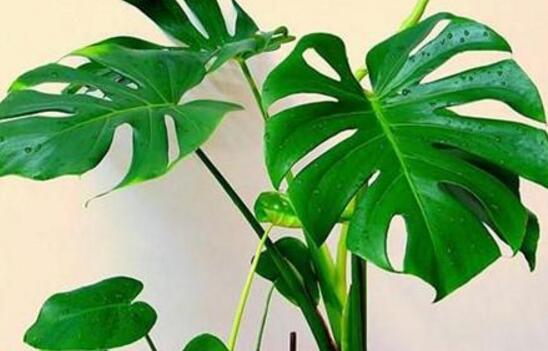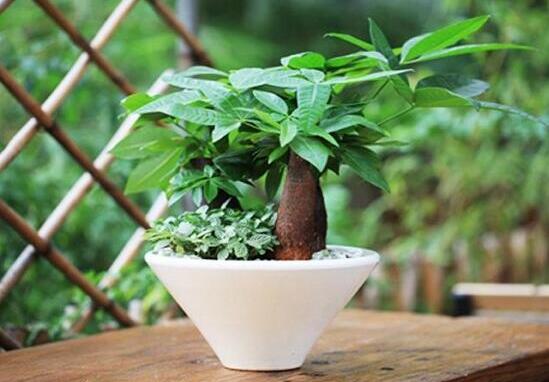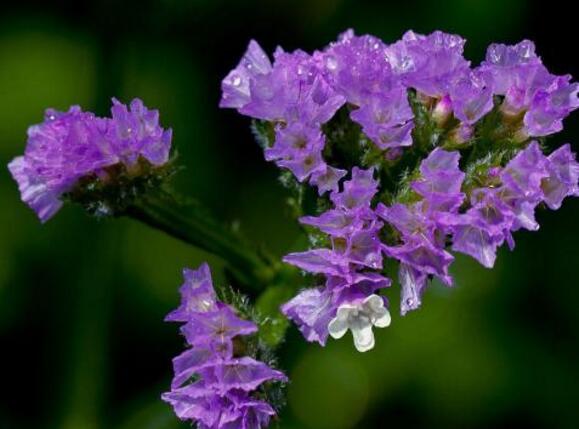How to reproduce the tortoise back bamboo, the breeding method / ramet of the tortoise back bamboo is the fastest.
Among the foliage plants, the tortoise back bamboo is a well-deserved star, so many people want to breed it after planting for a period of time, so how to reproduce it is more scientific? Today we will learn about the main breeding methods of tortoise-backed bamboo.
How do tortoise-backed bamboos reproduce

In different seasons, the climatic conditions will be slightly different, the breeding of tortoise back bamboo needs to choose the best way according to the season, so how to reproduce it? There are three main methods, namely sowing, cutting and ramet. Here are the main points in detail.
Breeding methods of Phyllostachys pubescens
1. Sowing and breeding of tortoise back bamboo
1. Time
The most suitable temperature for sowing and reproduction is 20-25 degrees, which is conducive to seed germination, so the season should be chosen in spring.
2. Select seeds
The selected seeds are mainly fruity and full, and be sure to pay attention to the mature seeds, do not select the seeds just after the fruit, put the seeds in a cool and ventilated place for preservation.
3. Immersion disinfection
The selected seeds should be soaked in 40 degrees warm water for 10 hours, and the soil used for sowing should also be sterilized. The method of disinfection is very simple. Put the soil in the sun to dry.
4. Start sowing
This is the most critical step in the breeding method of tortoise back bamboo. Generally take the way of on demand, the interval of each seed should be 2-3 cm, after sowing can be covered with plastic film, in order to control the temperature and maintain humidity, after 20 days can generally germinate, grow 5 leaves can be transplant, after transplanting need to adopt the correct culture method of tortoise back bamboo.
2. The method of cutting propagation of Phyllostachys pubescens.
1. Time
The selection time of cutting propagation is relatively more, which can be cut in spring or autumn, between April and May, between September and October, and in addition to winter, but the effect is not as good as that in spring and autumn.
2. Specific steps
The first thing to do is to select branches. To enrich the stem, and is the strong growth of the side branches, the length of 20 cm is appropriate, cut off the leaves at the base, leaving only the upper small leaves, while cutting off the aerial roots, which is conducive to the absorption of water.
Secondly, the soil chooses the mixture of peat or humus, the principle is air permeability, good drainage, and then insert the selected branches into the prepared soil. Put it in an environment with a temperature of 25 degrees and it can take root after 1 month. At first, the axillary buds on its stem nodes begin to sprout, so be sure to pay attention to the maintenance at this time.
3. Separate propagation of tortoise-backed bamboo
1. Time
Generally choose to propagate in summer and autumn, the time is mainly from September to October, and the specific time can be selected according to the temperature and humidity.
2. Methods of reproduction
Although ramets are not commonly used in the breeding methods of tortoise-backed bamboos, it is a relatively simple method to split off the side branches of large-scale tortoise-backed bamboos, it should be noted that they must have aerial roots and then planted in buckets or nutrition bowls.
Conclusion: among the breeding methods of tortoise back bamboo, there are three commonly used methods, the ramet is the fastest but the least used, the reason is that there needs to be large-scale tortoise back bamboo before reproduction, and it is more practical to have this condition. Otherwise, we should choose the way of cutting or sowing.
Separate plant propagation of Phyllostachys pubescens
In summer and autumn, the side branches of large tortoise-backed bamboos are split off, with partial aerial roots, and directly planted in buckets or bowls, not only the survival rate is high, but also the molding effect is fast.
Sowing and propagation of bamboo on the back of tortoise
Phyllostachys pubescens blossoms in summer, in order to improve the seed setting rate, artificial pollination is needed. The second pollination at 10:00 and 3-4 pm is the best, and the success rate of pollination is high. It takes 15 months from pollination to seed maturity. Attention should be paid to ventilation and fertilizer and water management at the stage of seed development to promote fruiting and fullness. Soak the seeds in 40 ℃ warm water for 10 hours before sowing, and the sowing soil should be sterilized at high temperature. Tortoise back bamboo seeds are larger, can be sowed on demand, keep 20-25 ℃ at room temperature after sowing, cover the box mouth with plastic film, maintain more than 80% humidity, and generally germinate 20-25 days after sowing. If the room temperature is too low in the process of sowing, not only the emergence of seedlings will be affected, but even the seeds will rot like water stains.
Cutting propagation is the most common and easy to master, so the following is a detailed introduction to the cutting propagation of tortoise back bamboo!
Summary on the breeding methods of Phyllostachys pubescens
Tortoise back bamboo is one of our commonly used household green plants, with broad leaves, green and green all the year round, which is not of ornamental value. It is very interesting to be used in home layout. Let's learn about the breeding methods of tortoise back bamboo.
The breeding method of tortoise-backed bamboo:
Propagation methods of Phyllostachys pubescens: 1. Ramet propagation
In summer and autumn, the side branches of large tortoise-backed bamboos are chopped off in whole segments, with partial aerial roots, and directly planted in wooden buckets or bowls, which not only has a high survival rate, but also has a fast forming effect, which is now the most commonly used and one of the simplest methods in the reproduction of tortoise-backed bamboo.
Propagation methods of tortoise back bamboo: 2. Cutting propagation
Another propagation method of Phyllostachys pubescens is cutting propagation. Stem node cutting can be used in spring and autumn, and the cutting effect is the best from April to May in spring and September to October in autumn. Cuttings are suitable for stem node incision healing and rooting during this period of time, and survive quickly. Cuttings selected stem tissue full, robust growth of the current year side branches, cuttings length of 20-25 cm, cut off the leaves at the base. Retain the upper leaflet, cut off the long aerial root, retain the short aerial root, in order to absorb water, conducive to hairy roots. The mixed substrate of coarse sand and peat or rotten leaf soil was used to keep 2527 ℃ and high air humidity after insertion, and it began to take root about one month after insertion. After the cuttings took root, the axillary buds on the stem nodes also began to sprout and spread leaves. In order to accelerate seedling growth, keep more than 10 ℃ at room temperature, strengthen fertilizer and water management, and seedling shaping can be used as a commodity in the second year after planting. If you need to hang embellishment, you can prepare a wooden frame or iron frame container, which is filled with palm skin, put on the fertile rotten leaf soil, and plant the rooting and surviving turtle back bamboo as a hanging basin commodity.
Propagation methods of tortoise back bamboo: 3. Sowing and reproduction
Seed sowing is also a more common propagation method for Phyllostachys pubescens, but compared with the former two, it blossoms in summer. In order to improve the seed setting rate, artificial pollination is needed. The second pollination is the best at 9 ~ 10:00 and 3 ~ 4 p.m., and the success rate of pollination is high. It takes 15 months from pollination to seed maturity. Attention should be paid to ventilation and fertilizer and water management at the stage of seed development to promote fruiting and fullness. Soak the seeds in 40 ℃ warm water for 10 hours before sowing, and the sowing soil should be sterilized at high temperature. The seeds of Phyllostachys pubescens are larger and can be sowed on demand. After sowing, the seeds can be kept at room temperature for 20: 25 ℃, and the box mouth is covered with plastic film to maintain more than 80% humidity. If the room temperature is too low in the process of sowing, not only the emergence of seedlings will be affected, but even the seeds will rot like water stains.
Tortoise back bamboo is a kind of foliage plant that we like very much. the leaf shape is unique and beautiful, which is suitable for beautifying the home environment. The breeding of tortoise back bamboo mainly uses the three methods summarized above. I hope it will be helpful to everyone.
- Prev

How to reproduce the rich tree? the four propagation methods of the rich tree / May cutting has a high survival rate.
Fortune tree, a kind of foliage plant with beautiful meaning and beautiful plant type, can not only beautify the environment, but also purify people's mind. It is a rare indoor breeding product. Nowadays, more and more people raise rich trees, and this requires a large number of reproduction, so how do rich trees reproduce?
- Next

Forget-me-not how to reproduce, forget-me-not reproduction method / sowing / planting / net fixing
Forget-me-not is a common flower in people's life, and it is cultivated in the homes of many plant lovers in our country, so many people are more concerned about its reproduction. About how to reproduce forget-me-not, what are the breeding methods of forget-me-not? Next, the editor will take you to learn about it.
Related
- Fuxing push coffee new agricultural production and marketing class: lack of small-scale processing plants
- Jujube rice field leisure farm deep ploughing Yilan for five years to create a space for organic food and play
- Nongyu Farm-A trial of organic papaya for brave women with advanced technology
- Four points for attention in the prevention and control of diseases and insect pests of edible fungi
- How to add nutrient solution to Edible Fungi
- Is there any good way to control edible fungus mites?
- Open Inoculation Technology of Edible Fungi
- Is there any clever way to use fertilizer for edible fungus in winter?
- What agents are used to kill the pathogens of edible fungi in the mushroom shed?
- Rapid drying of Edible Fungi

